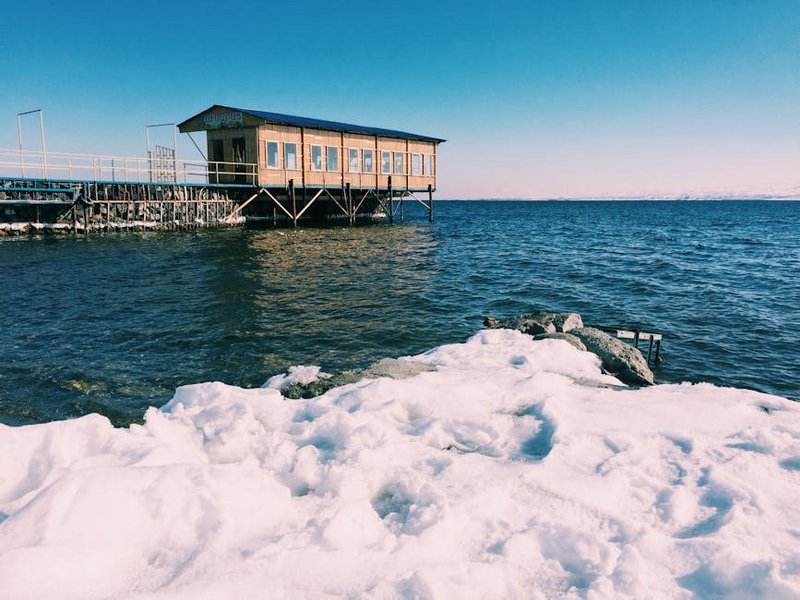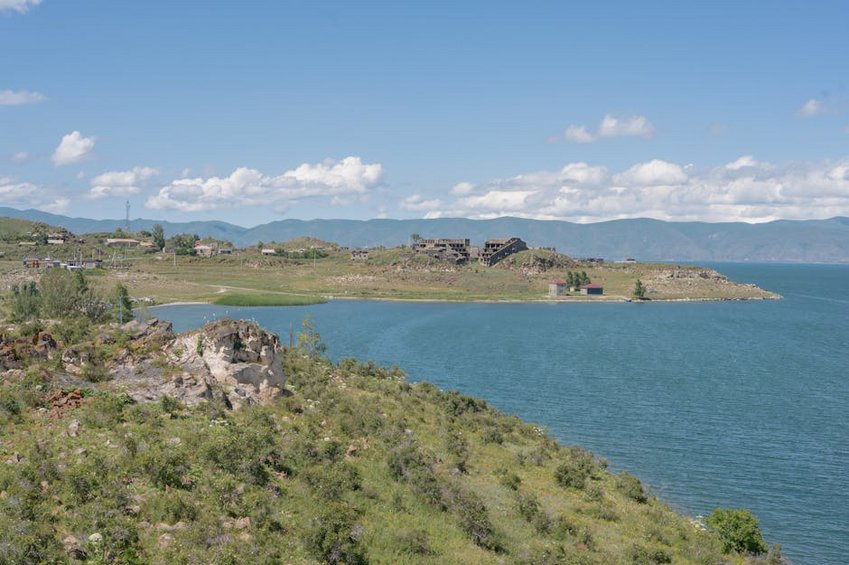Armenia Lake Sevan Monasteries: Spiritual Heritage Amidst Alpine Waters
Lake Sevan’s monasteries represent Armenia’s profound religious history set against one of Eurasia’s largest high-altitude lakes. These medieval complexes like Sevanavank and Hayravank combine 9th-century architecture with stunning natural landscapes at 1,900 meters elevation. This guide covers essential visiting details, cultural context, and practical tips for exploring these sacred sites.
Essential Historical and Geographical Context
Lake Sevan occupies the Gegharkunik Province in eastern Armenia, formed over 25,000 years ago through tectonic activity. The lake spans 940 square kilometers with depths reaching 80 meters, creating a unique microclimate. Its strategic location made it a spiritual center for Armenian Apostolic Christianity since the 4th century.
Armenian monastery construction peaked between the 9th and 13th centuries under various kingdoms and catholicoses. Sevanavank monastery specifically dates to 874 AD, founded by Princess Mariam of the Bagratuni dynasty. These structures served as religious centers, manuscript repositories, and defensive outposts throughout medieval periods.
Historical Significance Timeline
Understanding the chronology helps appreciate these sites’ importance.
- 4th Century: Christianity becomes Armenia’s state religion, establishing monastic traditions around Lake Sevan’s shores.
- 9th Century: Sevanavank monastery construction begins under Ashot I Bagratuni, serving as spiritual hub for Armenian resistance.
- 13th-15th Centuries: Monasteries withstand Mongol and Timurid invasions, preserving Armenian cultural identity through illuminated manuscripts.
- Budget travelers spend $25-40 daily using marshrutka transport, guesthouses, and self-catering, with monastery entrance fees totaling $10-15 weekly.
- Mid-range visitors allocate $50-80 daily for private taxis, boutique hotels, and restaurant meals, including guided monastery tours at $30-50 per person.
- Luxury experiences cost $100-150 daily featuring chauffeur services, lakeside resorts, and private archaeological guides specializing in Armenian religious history.
- Armenia Tourism Committee
- Lonely Planet Armenia Guide
Geographic Location and Access Points
Lake Sevan lies 60 kilometers northeast of Yerevan in the Armenian highlands, accessible via the M-4 highway. The lake’s northern shore contains the Sevan Peninsula, home to Sevanavank monastery, while southern shores feature Hayravank and other complexes. Driving from Yerevan takes approximately one hour, with regular marshrutka minibuses departing from the city’s central station.
Elevation ranges from 1,900 meters at lake level to 2,200 meters in surrounding mountains, creating dramatic temperature variations. The Sevan Peninsula connects to mainland via a narrow isthmus, offering panoramic views across the entire lake basin. Recent infrastructure improvements include paved roads to most monastery sites and visitor facilities.
Cultural and Religious Importance
Armenian Apostolic Christianity maintains unique traditions distinct from both Orthodox and Catholic branches, with monasteries serving as living religious centers. Lake Sevan’s spiritual sites host annual pilgrimage events, particularly during Vardavar water festival in July. Local communities continue maintaining these structures through volunteer efforts and religious donations.
Monastery architecture features distinctive khachkars (cross-stones) and vaulted ceilings using local basalt and tuff stone. These design elements symbolize theological concepts through geometric patterns and biblical scenes carved into facades. Contemporary religious services still occur at Sevanavank during major feast days, attracting both pilgrims and tourists.

Alt: “sevanavank-monastery-lake-sevan-armenian-highlands-architecture”
Armenia Lake Sevan Monasteries – Planning Your Trip
Successful visits to Armenia Lake Sevan monasteries require understanding seasonal patterns and logistical considerations. Summer months from June through August offer warm weather but significant crowds, while spring and autumn provide cooler temperatures with fewer visitors. Your Armenia Lake Sevan monasteries itinerary should balance monastery exploration with lake activities for a comprehensive experience.
Budget approximately $40-60 daily for mid-range travel, covering transportation, meals, and entrance fees. Monastery sites typically charge $2-5 admission, with combination tickets available for multiple locations. Guided tours from Yerevan range from $25-50 per person, including transportation and historical commentary.
Essential preparations include comfortable walking shoes, layered clothing for variable mountain weather, and sun protection at high altitudes. Download offline maps since cellular service can be unreliable around remote monastery locations. Carry Armenian dram cash since credit card acceptance remains limited outside major hotels and restaurants.
Best Time to Visit Lake Sevan Monasteries
Peak season runs July-August with temperatures averaging 75°F (24°C) and maximum daylight hours for exploration. These months coincide with Armenian school holidays, increasing domestic tourism at popular sites like Sevanavank. Book accommodations three months ahead for summer visits, especially lakeside hotels in Sevan town.
Shoulder seasons of May-June and September-October provide ideal conditions with temperatures between 60-70°F (15-21°C). Crowds diminish significantly while monasteries remain accessible, though some boat services may operate reduced schedules. Winter visits from November-March offer dramatic snowy landscapes but require four-wheel drive vehicles for access.
Budget Planning and Costs
Daily expenses vary based on travel style and accommodation preferences.
Essential Preparation Checklist
Pack layers including warm jackets even in summer, as temperatures drop rapidly at elevation after sunset. Sturdy hiking shoes are essential for navigating uneven stone paths and steep staircases at monastery complexes. Bring refillable water bottles, high-SPF sunscreen, and polarized sunglasses to combat intense high-altitude sunlight.
Documentation requires valid passports with at least six months validity for most Western nationalities, with visa-free entry for EU/US citizens up to 180 days. Purchase comprehensive travel insurance covering mountain activities and medical evacuation from remote areas. Learn basic Armenian phrases like “barev” (hello) and “shnorhakalutyun” (thank you) for enhanced cultural interactions.
Top Monastery Attractions and Activities
Lake Sevan’s monastic complexes offer diverse architectural styles and historical periods within compact geographic areas. Sevanavank on the northern peninsula provides the most complete visitor experience with two churches and museum exhibits. Hayravank on the western shore features earlier construction techniques and fewer crowds for tranquil contemplation.
Combination visits allow appreciating different artistic styles from the 9th through 13th centuries across multiple sites. Most monasteries remain active religious centers, so visitors should dress modestly and maintain respectful behavior during services. Photography opportunities abound throughout daylight hours, with golden light particularly dramatic during early mornings and late afternoons.
Must-See Monastery Complexes
Sevanavank monastery dominates the peninsula with Surb Arakelots and Surb Karapet churches constructed from black tuff stone. The complex includes a small museum detailing archaeological finds and religious artifacts recovered from lake excavations. Visit before 10 AM to avoid tour groups and capture optimal photography conditions across the lake panorama.
Hayravank monastery dates to the 9th-12th centuries with a distinctive dome-less design and intricate khachkar collection. Its location on a rocky outcrop provides dramatic wave-washed views during windy conditions. Admission costs approximately $3 with self-guided exploration available through informational placards in English and Armenian.
Makenyats monastery on the southern shore offers complete solitude with minimal restoration, showcasing original stonework and medieval construction methods. Access requires four-wheel drive vehicles or guided tours from Sevan town, with visits typically lasting one hour. This site appeals particularly to archaeology enthusiasts and those seeking untouched historical atmosphere.
Hidden Gems and Local Favorites
Vanevan monastery complex near the village of Vanevan features 10th-century buildings with well-preserved fresco fragments rarely seen by international visitors. Local guides from nearby Tsovagyugh village provide access and historical context for small groups. The site requires moderate hiking through wildflower meadows, rewarding visitors with complete serenity and panoramic lake views.
Shoghakn monastery ruins on the northeastern shore contain foundational remains and cemetery khachkars dating to the 12th century. This location remains important for local pilgrimage, especially during April 24 commemorations of the Armenian Genocide. Visitors should approach quietly and avoid disturbing religious ceremonies that may be in progress.
Photography and Scenic Viewpoints
Sevanavank’s upper courtyard provides unmatched panoramic views across the entire lake basin, particularly during sunrise and sunset hours. Use wide-angle lenses to capture both architectural details and landscape context in single frames. Midday photography benefits from polarized filters to reduce water glare and enhance mountain contrasts.
Hayravank’s western orientation creates dramatic backlighting conditions during late afternoons, emphasizing stone textures and carved details. The adjacent fishing village offers cultural photography opportunities with traditional wooden boats and net-mending activities. Drone photography requires special permits from Armenian authorities, obtainable through licensed tour operators.
Practical Travel Information and Logistics
Transportation options range from public marshrutkas to private drivers, with journey times from Yerevan varying from one to two hours. Accommodation spans budget guesthouses to luxury resorts, though availability decreases during peak summer months. Advanced booking proves essential for July-August visits, particularly for lakeside properties with monastery views.
Local cuisine features freshwater fish from Lake Sevan, including Ishkhan (Sevan trout) prepared with traditional Armenian herbs and spices. Restaurant prices range from $8-15 for main courses, with higher costs at hotel dining establishments. Credit cards gain acceptance in Sevan town but remain unreliable at remote monastery cafes and souvenir stalls.
| Category | Options/Features | Price Range (USD) |
|---|---|---|
| Accommodation | Guesthouses, boutique hotels, luxury resorts with lake views | $25-150 nightly |
| Transportation | Marshrutka minibuses, taxis, rental cars, private drivers | $5-80 daily |
| Dining | Local cafes, restaurant meals, hotel dining, picnic supplies | $8-30 per person |
| Activities | Monastery tours, boat trips, hiking guides, photography workshops | $10-60 per activity |


